Annabelle Tan Kai Lin
A Working Archive of Design, Research and Thoughts
A Working Archive of Design, Research and Thoughts
Socio-Natures: Scarcity and Affordances in Singapore

This socio-technical report dissects the quantitative and qualitative conditions of Singapore’s tropicality through the scarcity and affordances surrounding eight key aspects fundamental to national consciousness – land, water, food, materials, energy, labour, biodiversity and civic space. Scarcity is seen as an artificial condition that perpetuates our reliance on neocolonial methods of regional extrapolation within a capitalist global system. While affordances refers to latent opportunities within our existing urban landscape or submerged practices and know-how in our recent past that could form the first bold steps towards an emergent route to self-sufficient abundance.
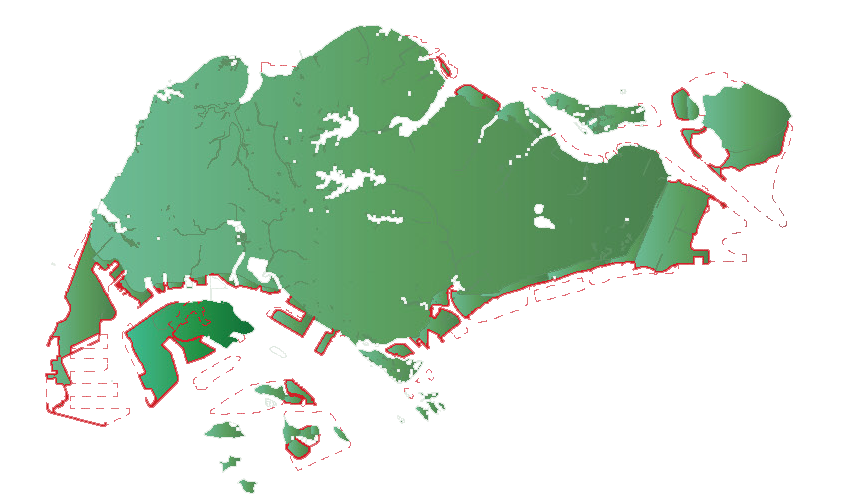
01
Land
Being a city-nation-state bounded within the confines of an island, land has been a longstanding scarcity issue in Singapore, becoming a defining feature of the country’s identity. This scarcity permeates into how land – its surface value as well as its literal constituent material, sand – is used, managed and distributed. Since the colonial era, land reclamation has been touted as a solution to this scarcity – a masterful manipulation of terrain to literally bend nature to man’s needs.

The government imports sand from neighbouring countries, reserving them in sand banks for future land reclamation projects. Ironically, these banks take up large inaccessible areas themselves. Acting as the guardian of this scarce, precious commodity, the state has tight control over land use and ownership. The Planning Act enforces the strict delineation and categorisation of land for specific ordained uses, abstracting and alienating people from the land they live on.

Large portions of land are reserved for mono-programmatic uses, from inaccessible industrial areas to ringfenced central business districts. The Covid 19 pandemic has demonstrated the static and vulnerable state of these mono-use areas, like how the central business district were emptied and continue to be underused as people adapt faster than physical realities. Creating messier patterns of land use that transcend zoning categories and temporal shifts essentially allow land to be used many times over, from day to night, from one use to another. We need to forgo the modernist containment of land use in order to tap on this true affordance of land.

02
Water
As Singapore’s population growth outpaces the supply of fresh water collected by our 17 reservoirs, the government has deployed other means, from external sources like the Johor River Waterworks, to adopting expensive technological solutions like desalination. Yet, how much of this scarcity is inflated by artificial demand? Water consumption in the domestic realm has decreased slowly over the years but is high relative to the world average, with Singaporeans expending water at rates comparable to countries like UK and USA.
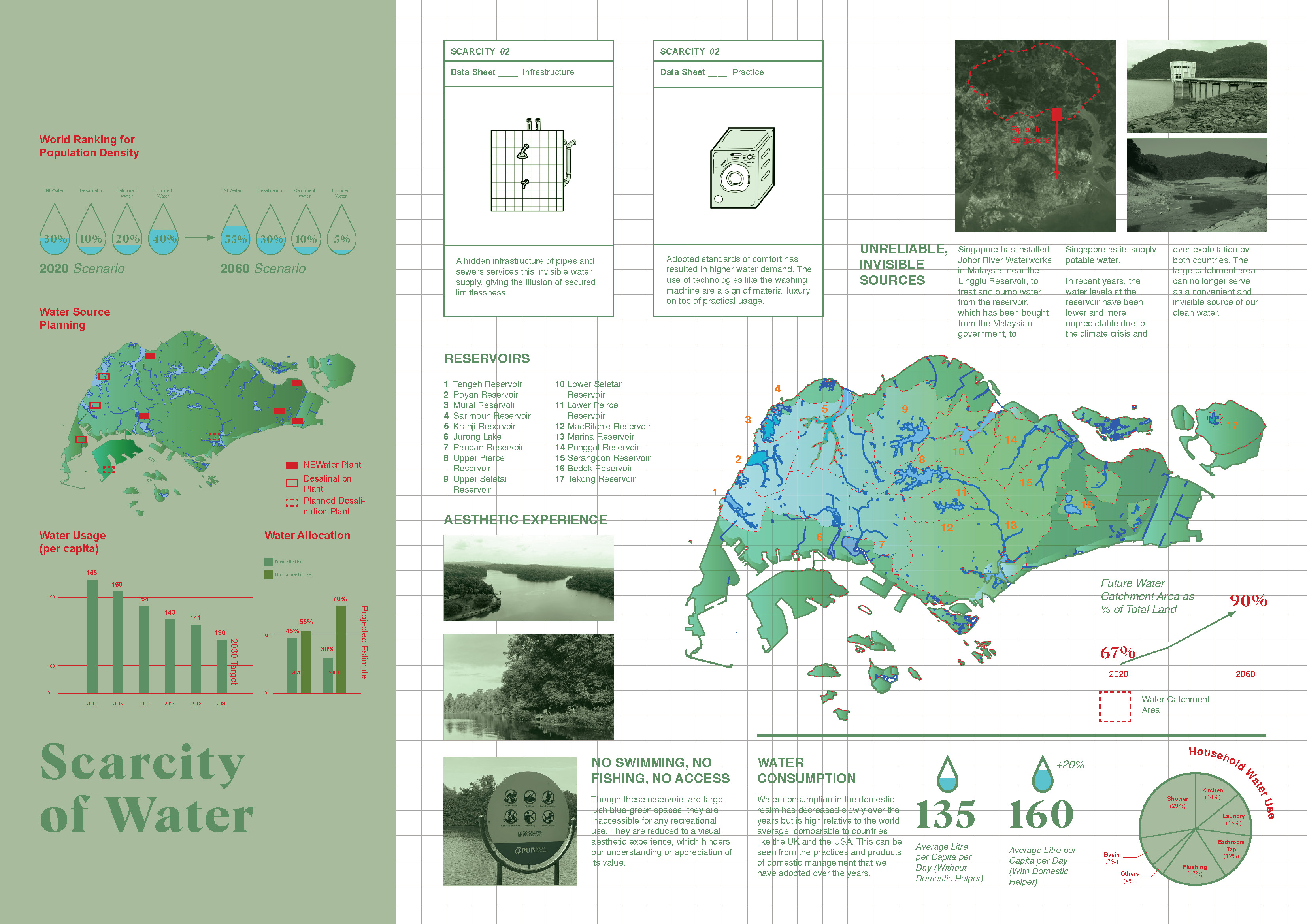
In Singapore’s modern landscape, a hidden infrastructure of pipes and sewers services the population with an invisible water supply, giving the illusion of secured limitlessness. This phenomena of hidden provision, combined with our adopted standards of comfort (a not-so-historical turn of events occurring in tandem with modernisation) has resulted in higher water demand, which paradoxically feeds the issue of water scarcity.
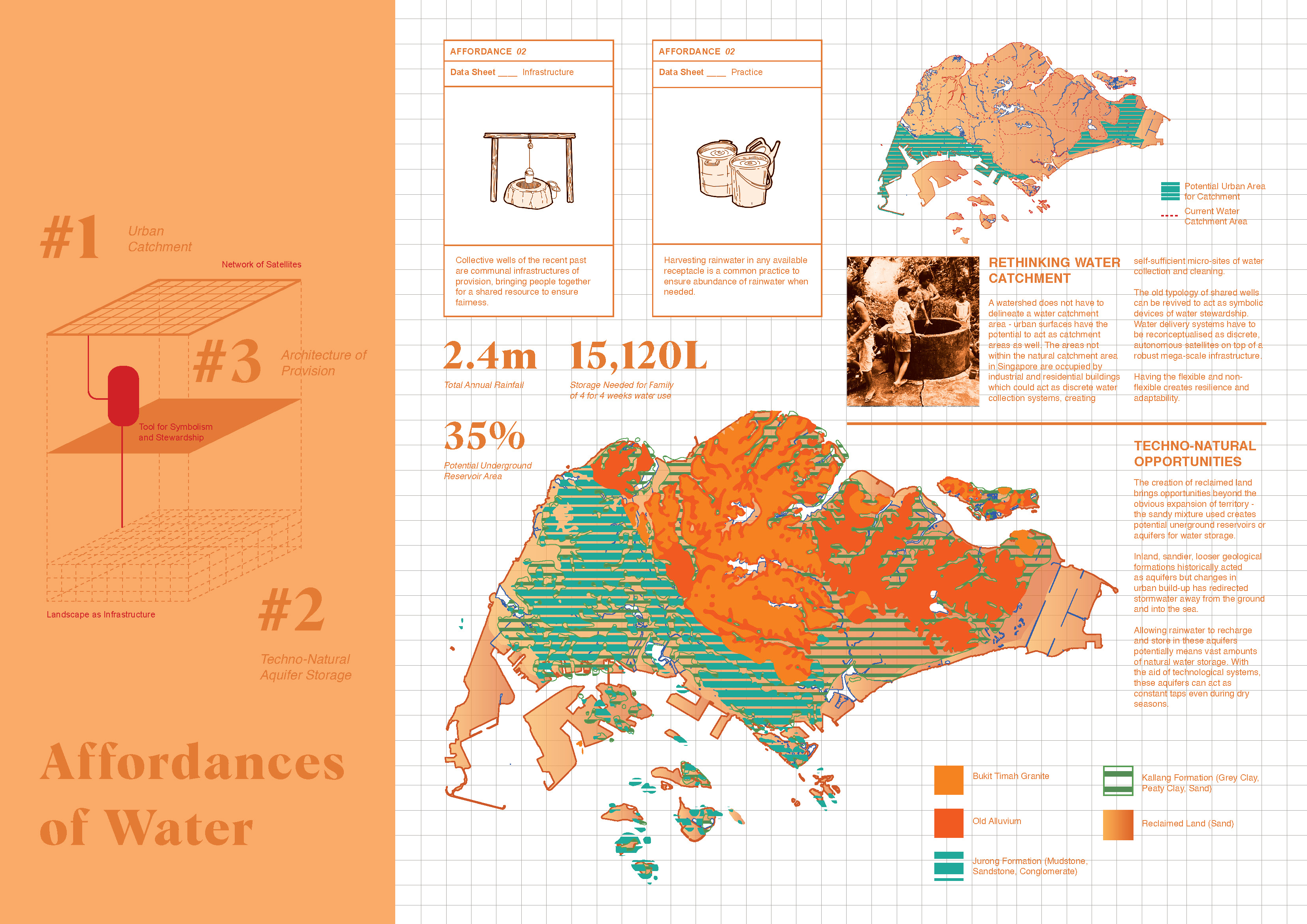
A watershed does not have to be limited to a naturally occurring water catchment area – urban surfaces have the potential to act as catchment areas as well. The areas not within the natural catchment area in Singapore are occupied by industrial and residential buildings which could act as self-sufficient meso-sites of water collection and cleaning. Sandy geological formations historically acted as aquifers, tapped onto by traditional wells during kampung days, but changes in urban build-up has redirected stormwater away from the ground and into the sea. Allowing rainwater to recharge these aquifers potentially means vast amounts of underground natural water storage. With the aid of technological systems, these aquifers can act as constant taps even during dry seasons.
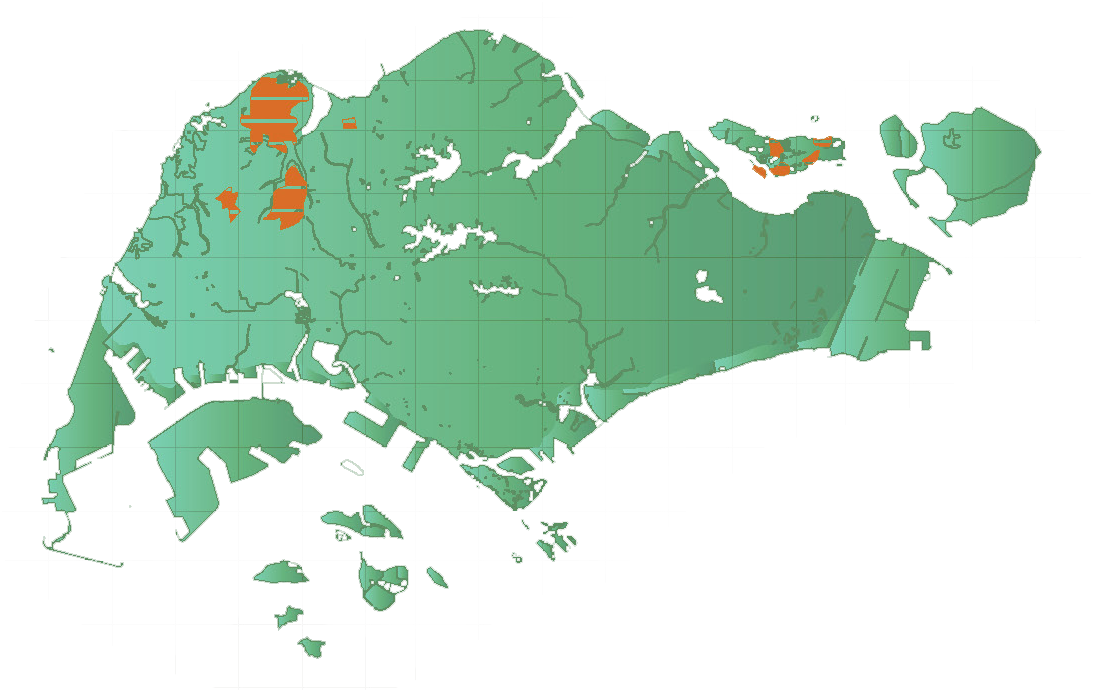
03
Food
The use of Singapore’s land for productive, agricultural uses has diminished severely over the years as land has been put to more ‘productive’ use. Instead, spaces of transport, processing and distribution are privileged. The appearance of an endless food supply flown in from all over the world and sold at affordable prices for the convenience of the population gives the impression of food security when in fact, these links are volatile in the face of climate crisis and global market disruptions.
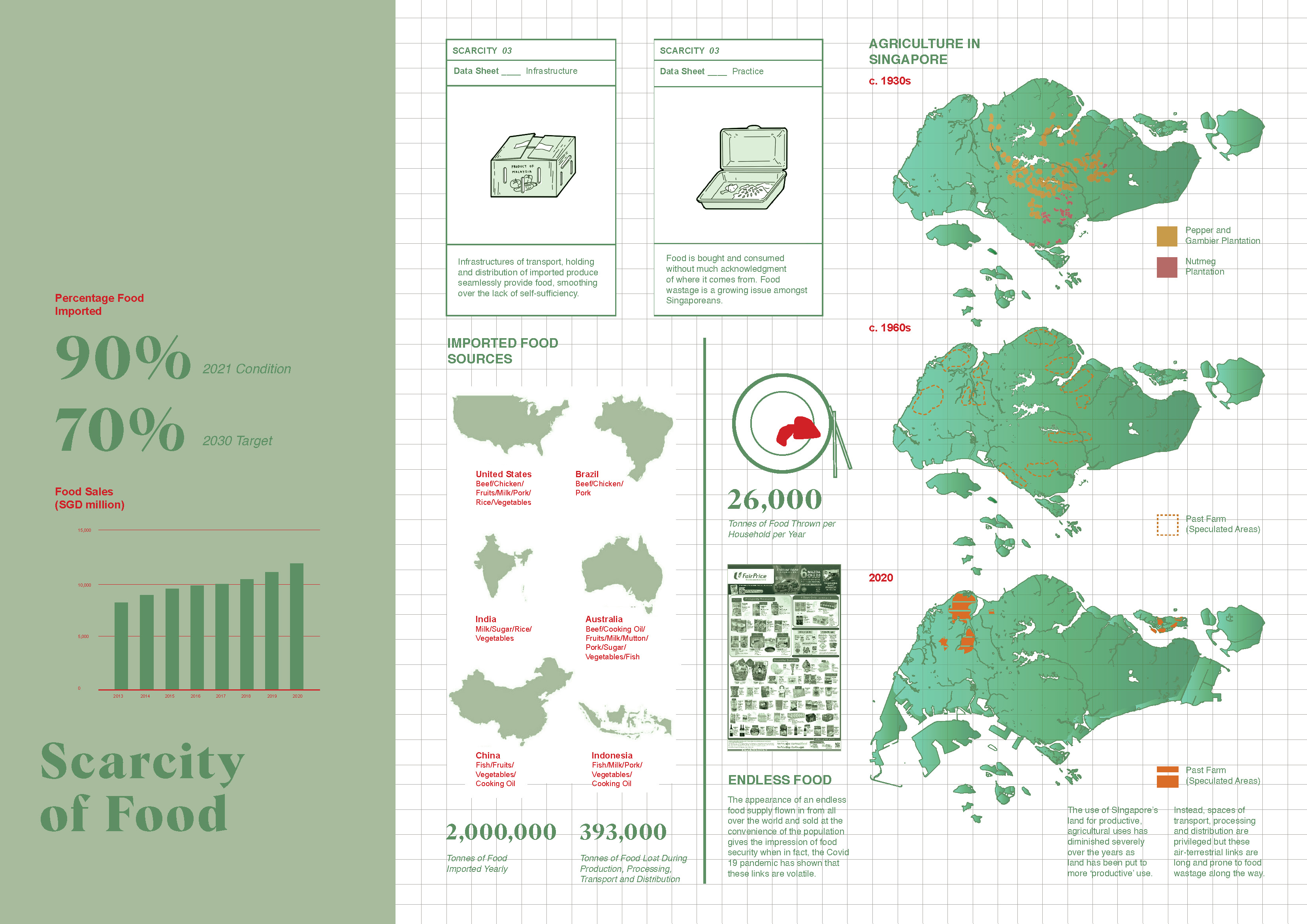
Infrastructures of transport, holding and distribution of imported produce seamlessly provide food to the Singaporean population, smoothing over the lack of self-sufficiency. Food is bought and consumed without much acknowledgment of where it comes from, giving rise to immense food wastage. The extensive routes through which food is shipped causes 393,000 tonnes of food to be lost along the supply chain, while the distancing between people and their food source also encourages thoughtless wastage of food by consumers. How can we rearrange our landscapes of production to hit the goal of sourcing 30% of our food supply locally while promoting a more direct relationship to the food we consume?
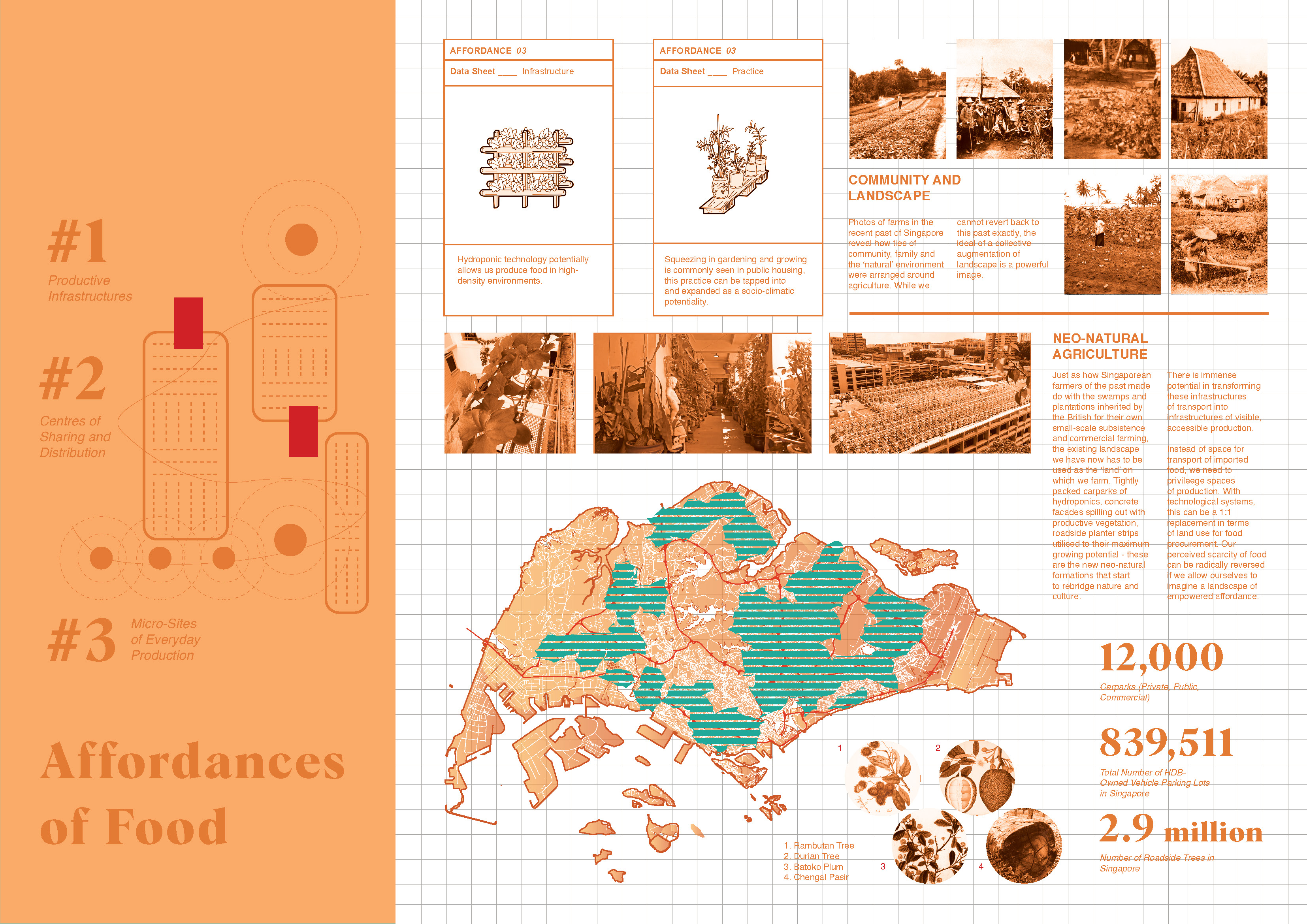
Instead of dedicating space for the transportation and distribution of imported food, we need to privilege spaces of production. With technological systems, land and underutilised infrastructure provide untapped affordance for self-sufficient food production, brought closer to the people who rely on them. Just as how Singaporean farmers of the past made do with the swamps and plantations inherited by the British for their own small-scale subsistence and commercial farming, the existing landscape we have now has to be used as the ‘land’ on which we farm. Tightly packed carparks of hydroponics, concrete facades spilling out with productive vegetation, roadside planter strips utilised to their maximum growing potential – these are the new neo-natural formations that start to rebridge nature and culture.
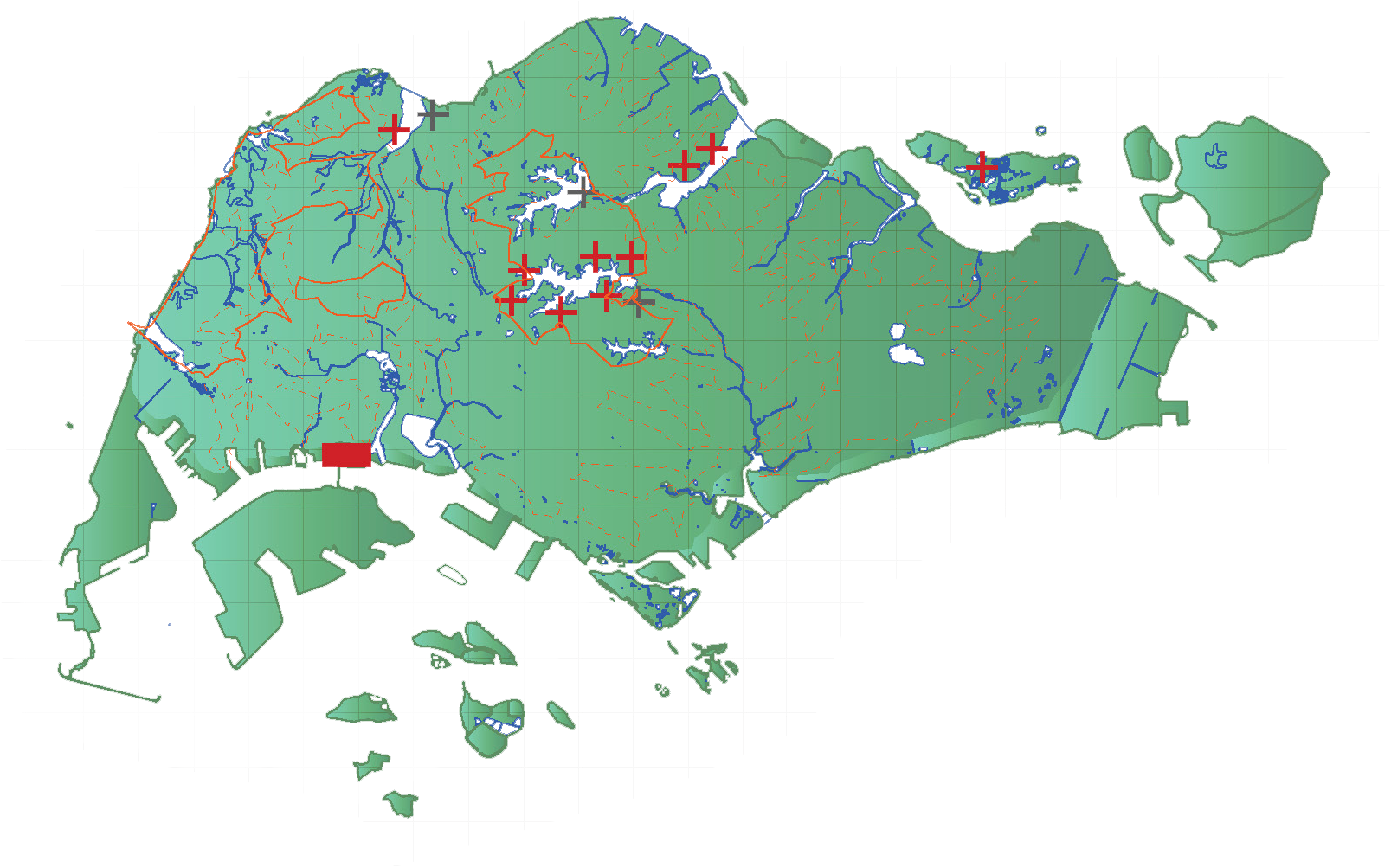
04
Material
Singapore’s growing radius of hinterlands has allowed it to continue expanding its built environment without qualms, even while its own potentials for local materials remains diminished. Singapore’s own micro-hinterlands in the form of quarries or timber forests have either been exploited fully during the colonial era or now ossified by reservation regulations and building laws that favour imported materials we could never produce.
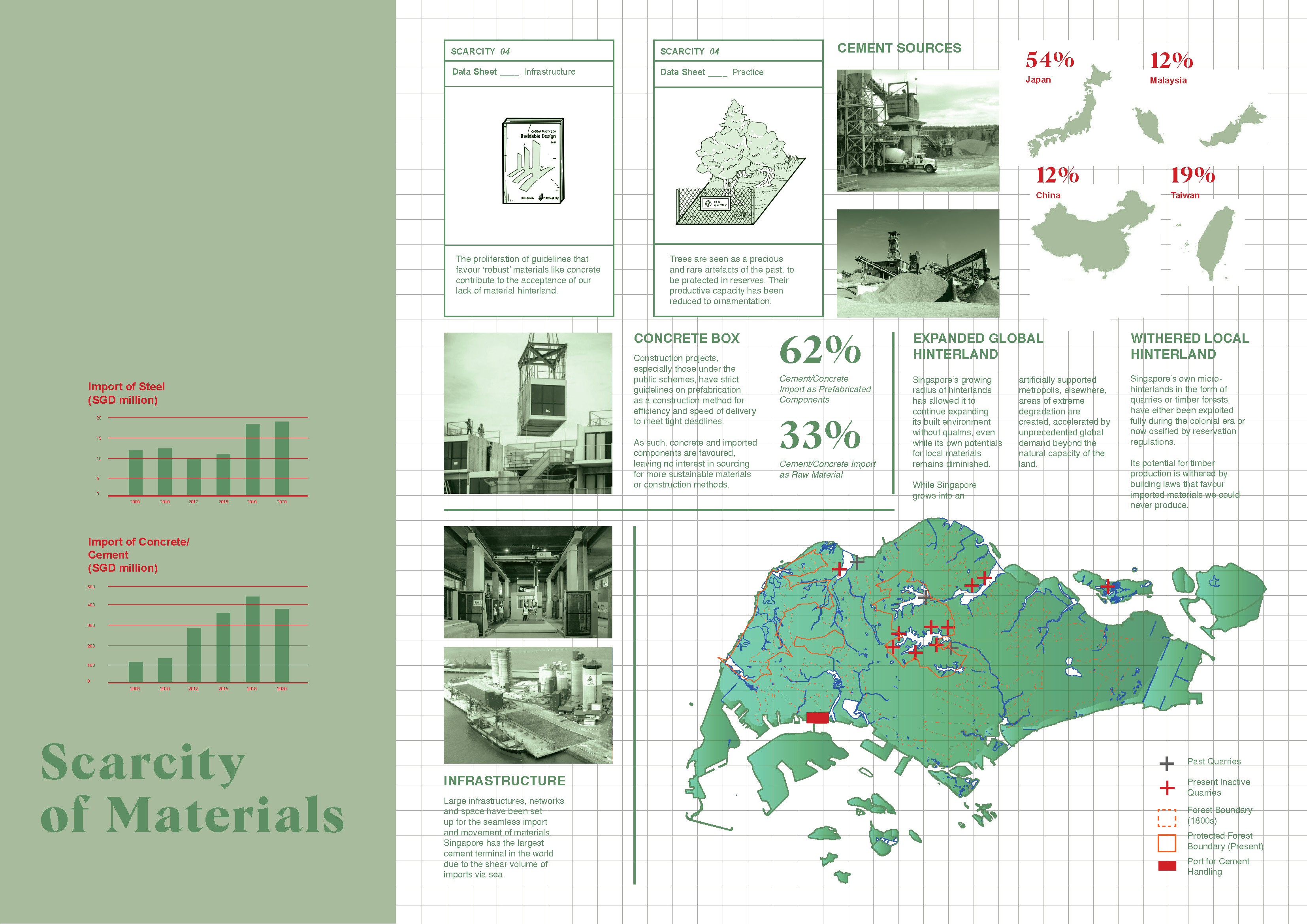
Singapore has the largest cement terminal in the world due to the shear volume of imports via sea. The proliferation of guidelines that favour ‘robust’ materials like concrete contribute to the acceptance of our lack of material hinterland. This is reinforced by an obsession with prefabrication, efficiency and maintenance lead to the favouring of seemingly modern and predictable materials. On the other hand, indigenous materials like tropical timber have become a lost craft. Trees are seen as a precious and rare artefacts of the past, to be protected in reserves. Their productive capacity has been reduced to ornamentation.

Singapore’s affordance in materials can be reinstalled with the recognition and revaluing of local materials such as bamboo, thatch and tropical timber. These materials are no longer used due to the forgotten skills of harvesting and construction, as well as the routines of care required in maintaining such materials, which are cast aside as undesirable. But in line with a practice of making do, we can relearn how to use these materials with current technologies, utilising them in modern ways that fit current standards of longevity and health.

05
Energy
Singapore has three main sources of natural gas – Indonesia, Malaysia and Australia, fed through kilometres of pipes that traverse through land and sea to reach a network of facilities and plants. These facilities are largely hidden and tucked away, but their products are felt tangibly in household and industrial consumption. The invisibility of this network makes the everyday scarcity and vulnerability of these links effectively nonexistent.

Singapore ranks 25th in the world for energy consumption per capita, behind countries mostly in the North with extremely cold climate. Our expectation of comfort is set within a strict range of temperatures, artificially regulated with high-energy machines like HVAC systems. Similar to the issue with water consumption, imported notions of comfort and cleanliness result in high energy demand, mainly from air-conditioning to keep out the tropical environment. Singapore is commonly touted as a global city-island of excellence. These painfully real interdependent cross-boundary reliance on energy are hidden for fear of overshadowing our geographical and metaphorical island independence.
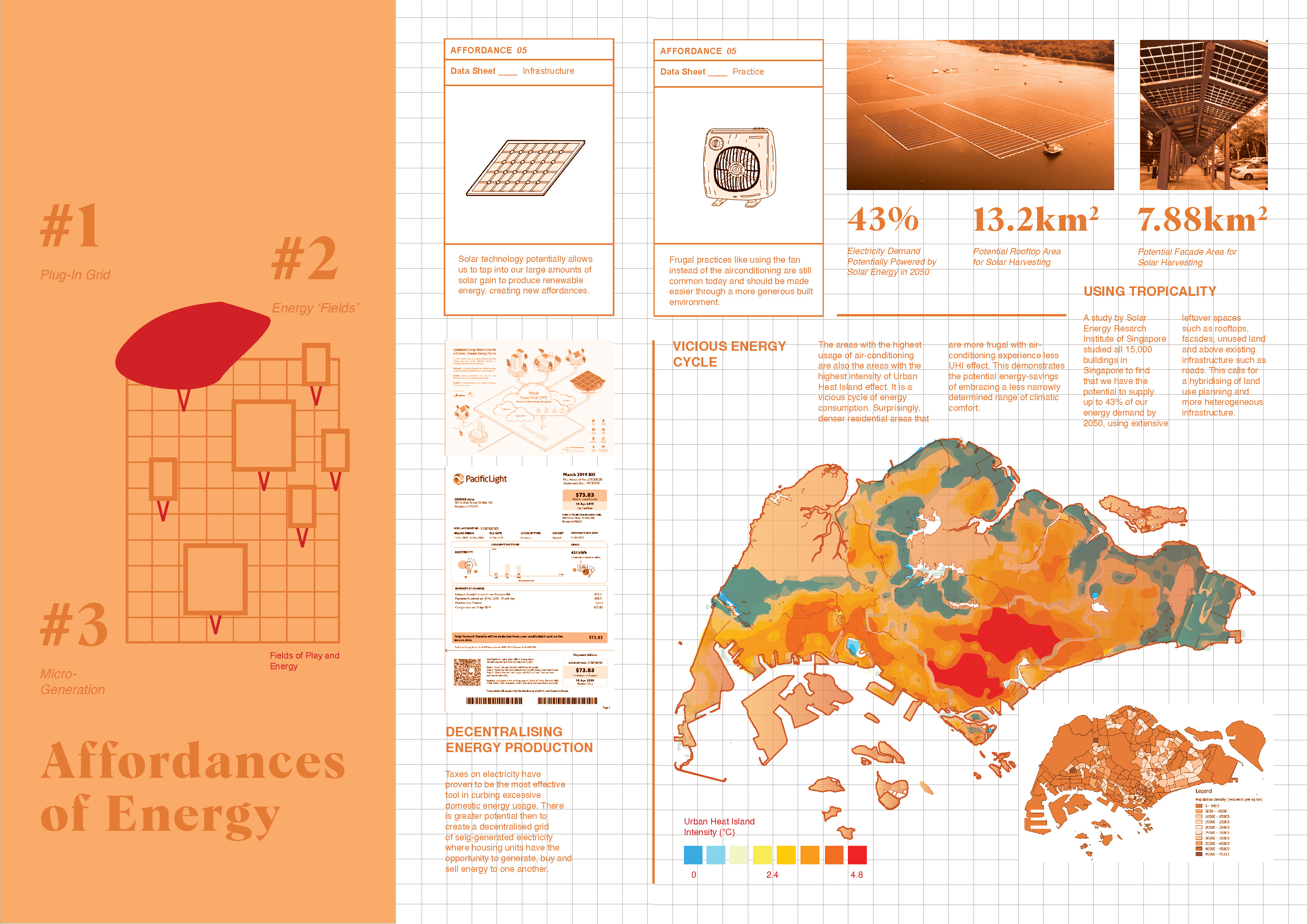
A study by Solar Energy Resarch Institute of Singapore studied all 15,000 buildings in Singapore to find that we have the potential to supply up to 43% of our energy demand by 2050, using extensive leftover spaces such as rooftops, facades, unused land and above existing infrastructure such as roads. This calls for a hybridising of land use planning and more heterogeneous infrastructure. Taxes on electricity have proven to be the most effective tool in curbing excessive domestic energy usage. This signals a potential to create a decentralised grid of self-generated electricity where housing units could generate, buy and sell energy to one another.
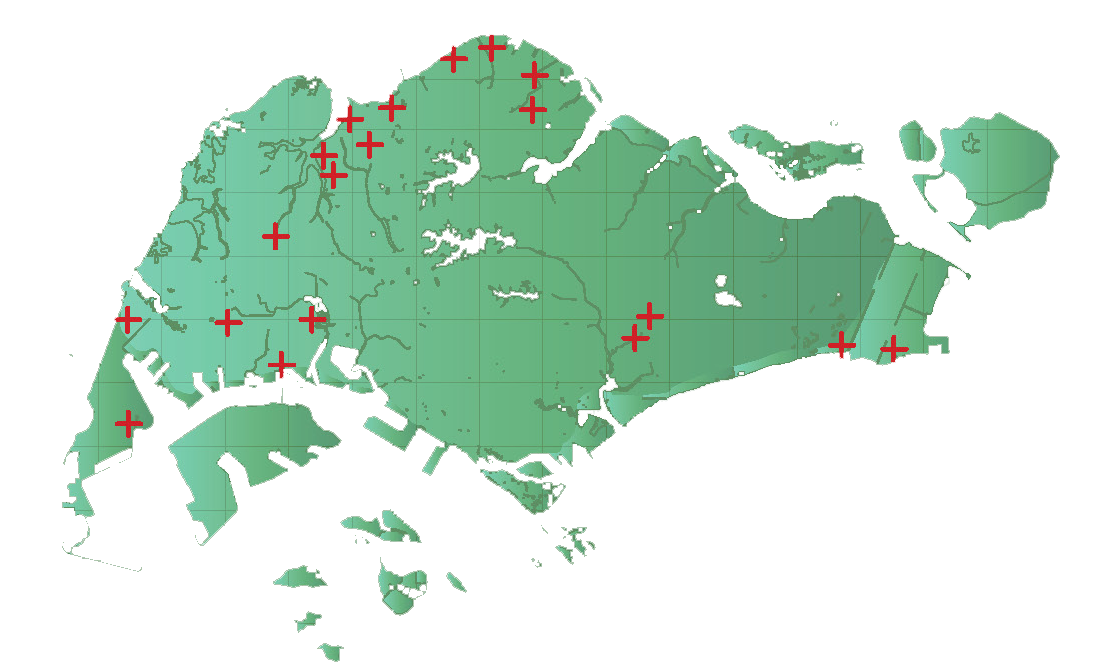
06
Labour
State rhetoric often touts Singaporeans as the only true resource the country can rely on, resulting in the reservation of local workforce for ‘better’ jobs that secure a decent cost of living. In its place, the regional comparative advantage of abundant labour force is tapped upon, exploiting the favourable currency differential to undercut wages in labour-intensive sectors. The over-reliance on foreign labour creates a scarcity of local knowledge and manpower in the built environment, propelling a vicious cycle of labour scarcity.

Foreign worker dormitories can be seen as critical sites of production for Singapore’s upkeep. These are usually situated near large projects, industrial areas or ports, keeping them out of sight of the everyday lives of Singaporeans. The segregation between the local population and migrant workers hides an essentially invisible labour force that creates, maintains and cleans the built environment for others to enjoy. As neighbouring countries develop, it is impossible to maintain the low wages paid out to these service industries that keep Sinapore shiny and new. How do we recalibrate the rate of renewal and the value placed on these jobs going forward?
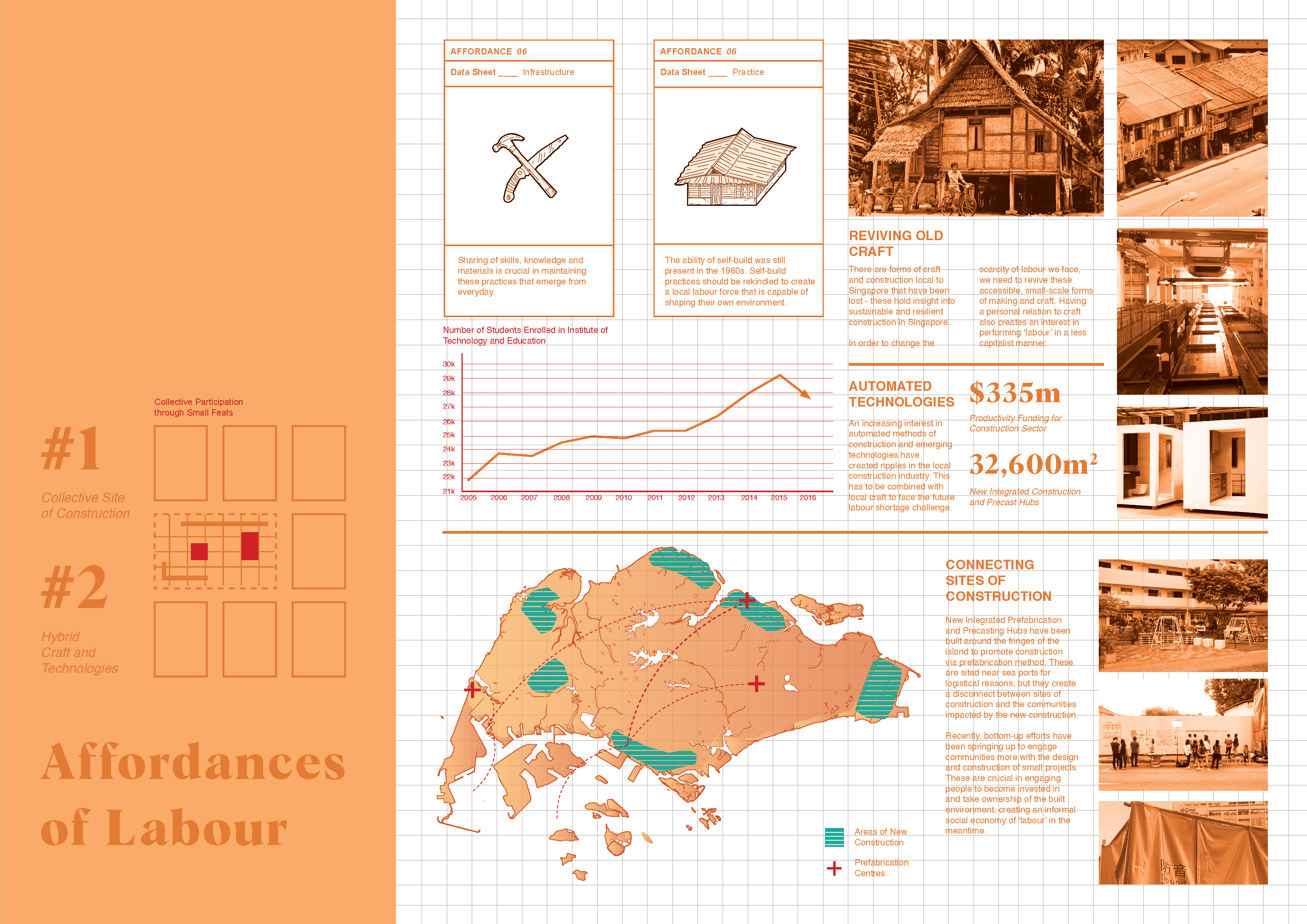
There are forms of craft and construction appropriate to Singapore’s climate and local resources that have been lost – these hold insight into future forms of sustainable and resilient construction. In order to change the scarcity of labour we face, we need to revive these accessible, small-scale forms of making and craft. Having a personal relation to craft also creates an interest in performing ‘labour’ in a less capitalist manner. In recent decades, bottom-up efforts have been springing up to engage communities more in the design and construction of small projects. These are crucial in empowering people to take ownership of the built environment, slowly building towards an informal social economy of ‘labour’.
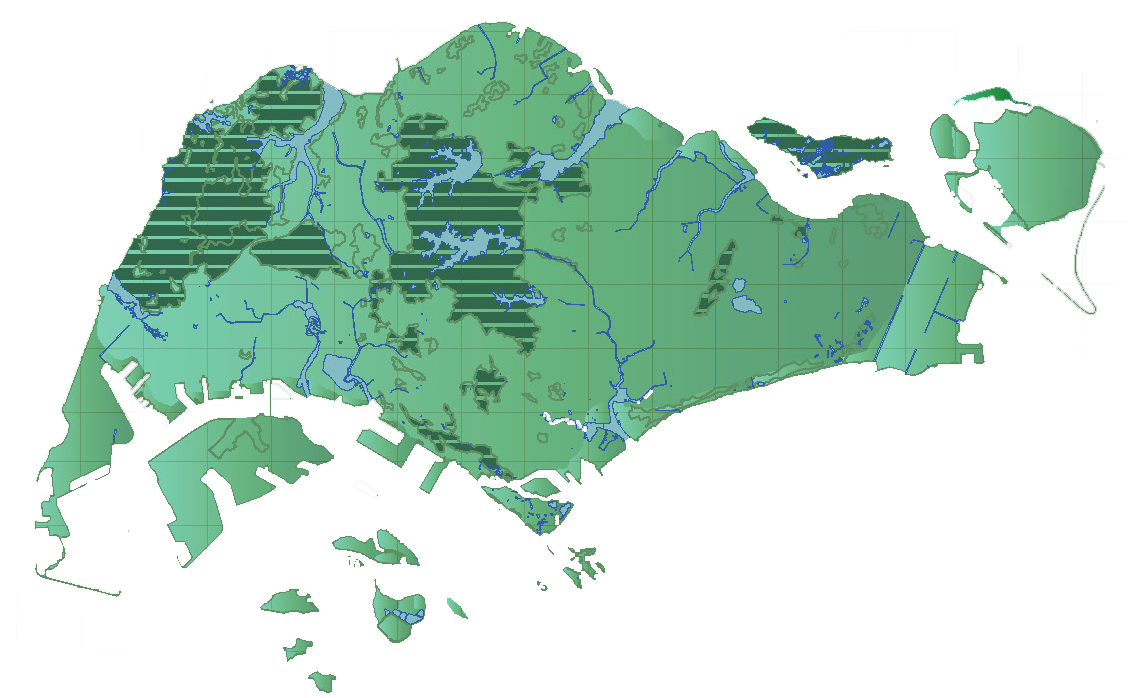
07
Biodiversity
Singapore has lost 95% of its initial forest since the colonial period. Though there have been conservation efforts to reforest areas and study the biodiversity left, these endeavours are not supported with the same zeal as developments of capital. Meanwhile, parks in Singapore are heavily curated for a non-engaging aesthetic experience, with plants chosen for colour, easy maintenance and sturdiness. A false image of nature is presented to the public who have no means to gain a deeper relationship with the environment around them.
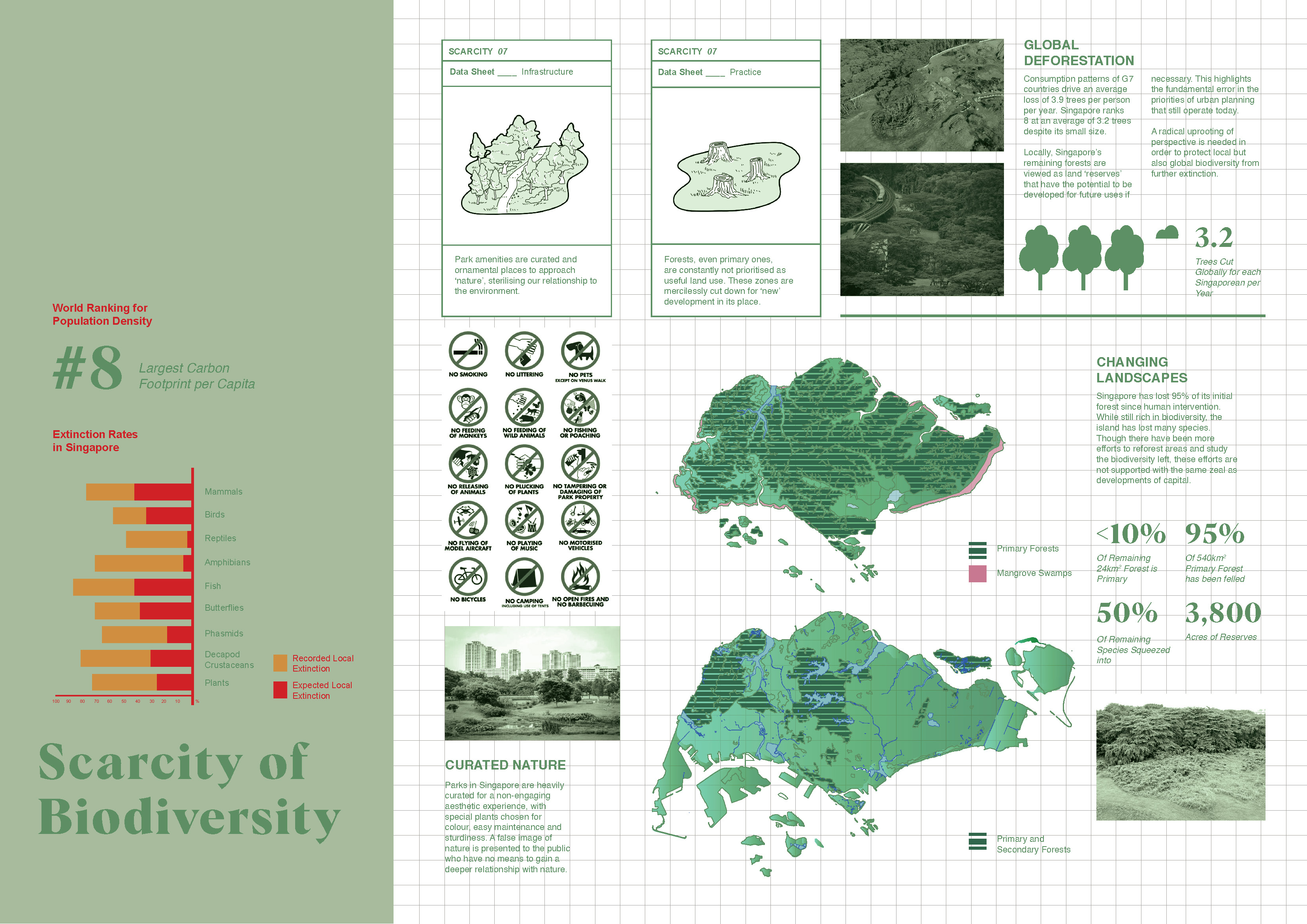
Forested areas are systematically not prioritised as an inherently ‘useful’ land use. These zones are mercilessly razed for ‘optimised’ development in its place. These forests are simply viewed as ‘land reserves’ that have the potential to be developed for future uses when necessary. This highlights the fundamental error in the priorities of urban planning that still operate today. Consumption patterns of G7 countries
drive an average loss of 3.9 trees per person per year. Singapore ranks 8th at an average of 3.2 trees despite its small size. Roadside tree-planting cannot compensate for the loss of critical biodiversity in already established areas. A radical uprooting of perspective is needed in order to protect local but also global biodiversity from further extinction.

There have been laudable efforts to create eco-corridors that connect existing parks and reserves in Singapore to ensure safe passage and habitats for animals. As a result, wildlife has been able to thrive alongside urban environments and people, repopulating our parks, reserves and rivers. Sightings of hornbills, jungle fowl, otters and other animals have created much fanfare amongst the human population, demonstrating the power of engagement with wildlife in sparking interest and ownership. These everyday encounters spur on embodied forms of informal knowledge-creation and could lead to more ecologically sensible practices, from bird-spotting groups to the proper behaviour during wildlife encounters.
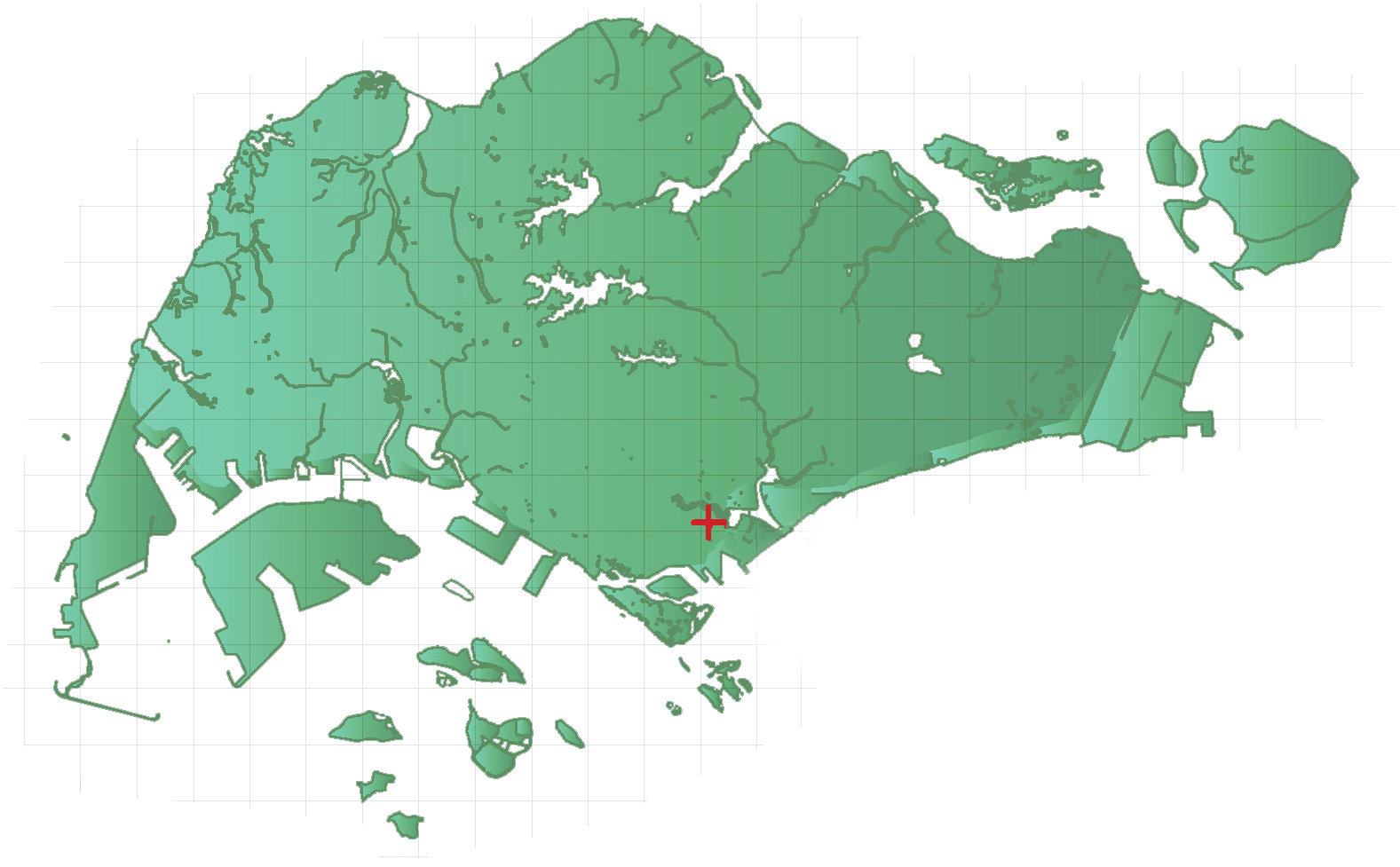
08
Civic Space
The tropical ‘other’ emerged during the early colonial There is only one park in Singapore where an individual can protest without a permit – a mere 6,000 m2 of true civic space for free speech, dissent and civic engagement. The tight regulation of virtually every ‘public’ or private space in Singapore creates a weak body politic, unable to critically assess current policies and issues without fear of persecution.

Public and private space in Singapore is interwoven into a tight continuum of efficient work-life-play. It is an interconnected flow of ‘purposeful’ spaces that moves between the realm of public and private, both spheres highly surveillance, leaving little time for ‘unproductive’ lingering or gathering. This reduces the chances of social and civic interaction. The scarcity of civic space is glossed over with extensive public engagement sessions and grassroot efforts that the government oversees. These, while commendable, can be taken to be opportunities of complaint and vacuous ‘therapy’ sessions for the disgruntled, stifling any true bottom-up rallying of civic power.

Though Singapore has a dearth of truly ‘public’ spaces for free speech, this is not to say that there is no informal politicking occuring on the grounds. Coffee shops or ‘kopitiams’ have been traditionally the place where people gather to complain about the government, discuss affairs or gossip. An everyday activity of breakfast, lunch or rest is combined with this informal political activity, bridging the gap created by complacency or civilian obedience. In this way, HDB towns act as natural civic centres, with older HDB towns tending to have richer public spaces with more spontaneous congregation and appropriation by its inhabitants.